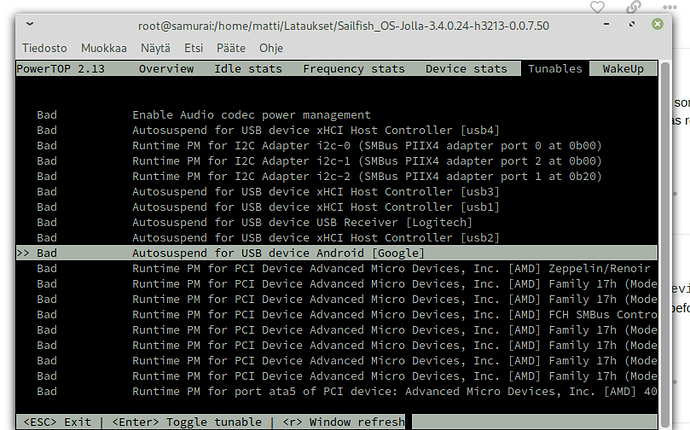I found a solution, and this may affect a whole bunch of devices!
Connect the device in desired mode (vol up + connect USB cable for me), run powertop and disable autosuspend in Tunables view, something like this:
After that, my phone keeps connected after running fastboot commands on it!
Edit: I still have to use the old fastboot binary - I’m having exactly the same error regarding the boot partition… Updating the opening post accordingly.
